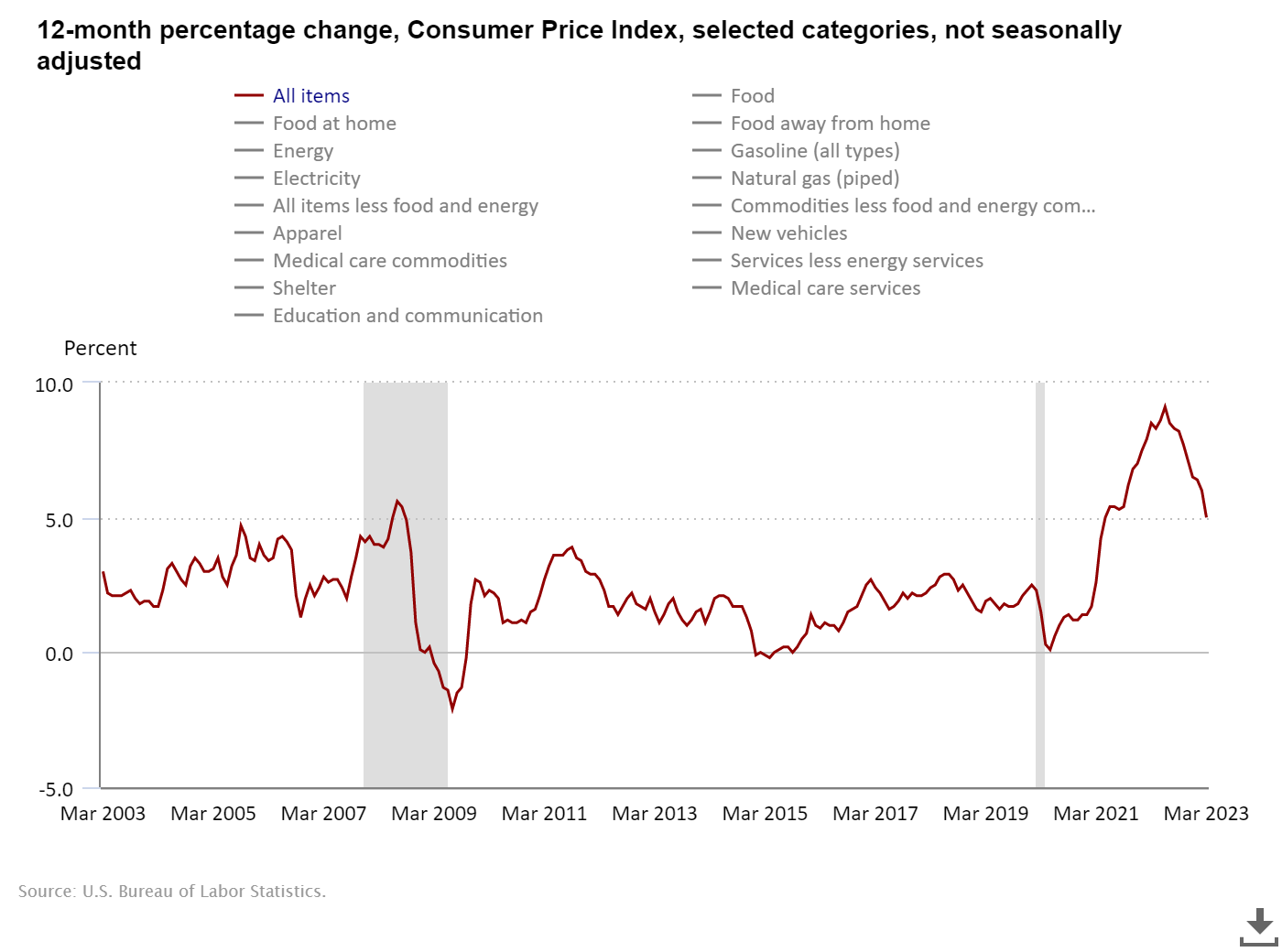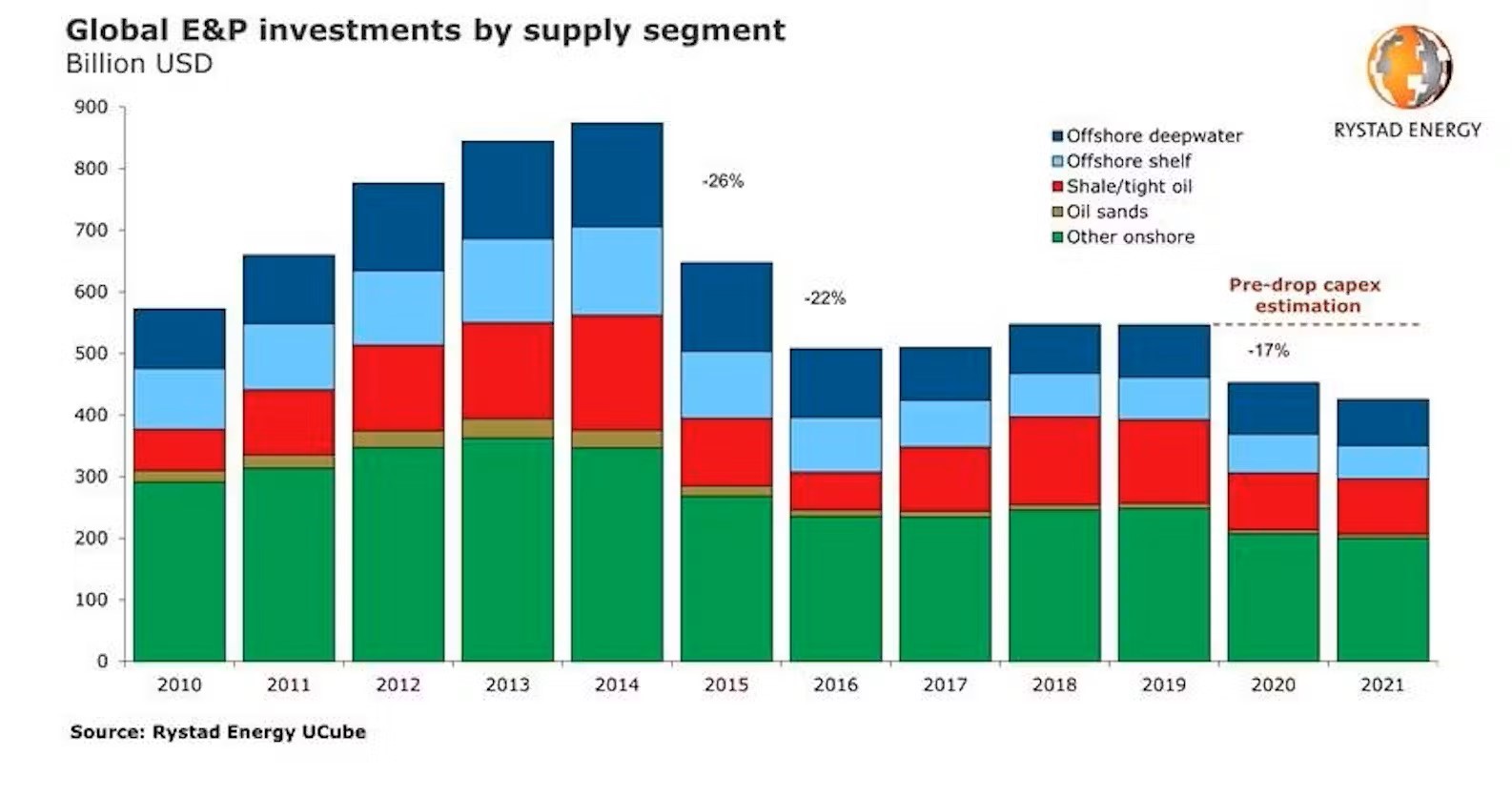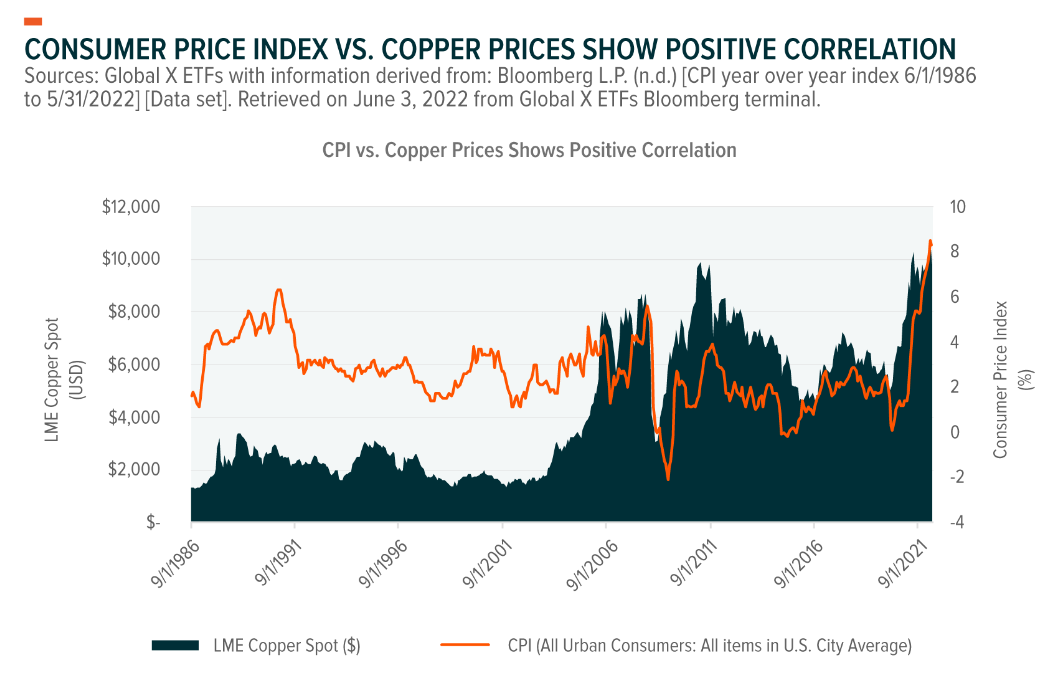2023…Sitting in the Eye of the Inflationary Storm (Part One)
With headline inflation easing in the US to less than 5% per annum, governments, mortgage holders, and central bankers are all breathing a collective sigh of relief.
No doubt, the fastest 12-month increase on interest rates has achieved its objective…stemming economic activity and putting a lid over rising prices.
The success of the US Federal Reserve can be summed up with this chart:

As you can see from the peak and subsequent drop on the right-hand-side, CPI has cooled rapidly from its record high of 9.1% in July 2022.
I’m sure we’ll see a lot of back patting and chest-beating among central bankers in 2023, given the inflation beast appears to have been tamed…for now.
But is confidence among these economic powerheads really a positive sign?
After all, these are the ‘professional forecasters’ who have delivered us one false prophecy after the next…
Former Federal Reserve Chair Ben Bernanke infamously pronounced the strength of the US economy just months prior to the Global Financial meltdown in 2007 (emphasis added):
‘The global economy continues to be strong, supported by solid economic growth abroad. U.S. exports should expand further in coming quarters. Overall, the U.S. economy seems likely to expand at a moderate pace over the second half of 2007, with growth then strengthening a bit in 2008 to a rate close to the economy's underlying trend.’
Australia’s own reserve bank called a housing crash a little over two years ago as the pandemic fear swept across the globe. Instead, we witnessed one of the fastest 12-month increases to our national median house price.
Which brings us to the next warning sign…
Economists and central bankers are unanimous in their expectations for falling inflation over the next two years.
The European Central Bank (ECB) expects headline inflation to decline from 5.6% in 2023 to just 2.6% in 2024 and 2.2% in 2025.
While the International Monetary Fund (IMF) is projecting inflation in the US to drop to just 2.3% in 2024 and 2.1% in 2025.
So, should we be worried?
What if the current levelling off is a mere blip in a longer-term trend of persistently higher inflation?
A short tranquil period where inflation eases before resuming its next painful leg higher…
Are we sitting in the eye of an inflationary storm?
It’s an uncomfortable question, but perhaps something investors need to consider.
After all, 2023 could offer a rare opportunity to align your portfolio toward a new era of higher inflation, something that central bankers seem to be dismissing.
But to understand where we could be heading NEXT, we need to first look at how we got here.
According to a report issued in January 2023 by researchers at the US Bureau of Labour Statistics, they found THREE main components that explain a rapid rise in inflation that began in 2020…
First and foremost was rapid volatility in energy prices.
The effects of which were magnified from backlogs of work orders for goods and services caused by supply chain issues due to COVID-19.
The research group also attributed price changes related to the auto-related industries.
But given the post-pandemic inflationary pressures are now behind us, are economists dismissing the notion of future threats?
The factors that led to rising inflation from 2020–22 could emerge in a new, much uglier form over the coming years…
As 2021 preluded too, it will boil down to energy.
In 2021, prices for gas, coal, and electricity rose to their highest levels in decades. Rapid global economic growth on the back of a COVID-reopening drove demand to feverish levels.
But that was a brief demand-driven price shock.
What if we are walking into a much bigger inflationary problem…
A global energy SUPPLY shock.
Lack of energy supply could BUST the notion of lower inflation
Critical underinvestment in the development of fossil fuel projects threatens future energy security.
As 2021 showed us, volatile energy prices are highly inflationary.
But unlike demand, which can be tapered through rising interest rates, energy SUPPLY is a much more difficult issue to tackle.
That’s because we’ve left the oil and gas industry in the dark in our narrow-minded push to reach net zero.
According to research group IHS Markit, oil and gas discoveries have dried up to their lowest levels in more than 60 years!
IHS reported the problem way back in 2017.
Yet since those warning signs were voiced, the problem has become MUCH worse.
As you can see from Rystad Energy, CapEx spending on oil and gas development began to dry up in 2015, sinking to all-time new lows in 2021:

So why is this a problem?
There’s a time lag of at least seven years from discovery to production.
As production declines on existing oil wells, it means replacement reserves will not be available.
This is the energy shock that’s set to hand us a renewed bout of inflationary pressure.
So, when can we realistically expect this to play out?
Perhaps sooner than most would expect.
According to some reports, the impact of long-term underinvestment in the traditional energy sector could start to impact supplies as early as next year.
Yet, according to the United Nations Secretary General Antonio Guterres, funding for oil and gas exploration is ‘delusional’.
He, like many policy leaders, is aghast at the idea of bringing in new supplies of oil, gas, and coal into our energy mix.
Their solution is renewables. At all costs, nothing but renewables.
But there’s little understanding amongst these political elite regarding the vast number of metals needed to build renewable energy technologies.
Ending our 100-plus-year reliance on fossil fuels won’t come in five or 10 years. There’s simply not enough impending supply of critical metals to allow that to occur.
According to the world’s largest oil producer, Aramco, the world is currently running on only 2% of spare capacity.
A global economy operating on such narrow margins makes it incredibly vulnerable to supply and demand shocks.
This is exactly what happened after the post-pandemic reopening.
Any number of reasons could tip the balance again…
War, attacks on Saudi oil fields, strong demand from China, or simply a steady reliance on oil fields that rest on borrowed time…where replacement reserves do not exist.
The inflation crisis is far from over…
That’s because our energy supply remains incredibly vulnerable.
So how can you prepare for a future shock?
The most obvious strategy is to own oil and gas stocks. Traditional energy companies are set to cash in on higher prices. This will help investors weather the inflationary storm.
But there’s another, less obvious, strategy to play this trend.
Owning copper stocks.
As you can see from the chart below, a study conducted by Bloomberg and Global X ETFs demonstrates that the red metal has a strong positive correlation with the Consumer Price Index (CPI):

In fact, the Bloomberg analysis showed that for every 1% rise in CPI from 1992, copper prices rose an equivalent 18%.
It’s why copper stocks could offer your portfolio a strong buffer against rising energy prices and the subsequent inflation shocks.
But this is just ONE of the reasons copper remains a key theme in my Diggers and Drillers publication.
Copper sits at the heart of the green energy transition…
China, the US, and Europe are set to rebuild their vast power networks to accommodate an electrified economy.
Copper wires as thick as your leg will have to criss-cross continents in order to deliver green energy from their source to millions of homes and businesses.
But the supply of copper is under threat.
In fact, we’ve just finished putting together a new presentation that outlines why the global economy will be faced with extreme shortages…
You can access all the details by clicking here.
Just like fossil fuels, investment in new copper projects have been in terminal decline.
I know this from first-hand experience having worked on copper projects in Australia and Africa.
As a geologist, I sit at the coal face. New copper discoveries are not happening…
Not only that, but the world’s biggest copper mines are suffering from declining output thanks to lower grades.
All this looms as a highly inflationary threat that promises to deliver much higher commodity prices in the years ahead. Energy and copper stocks will be the key stocks to own.
That’s why you need to take advantage of any short-term pullbacks in the market.
Overnight copper futures dropped around 3.5%, that’s a big move. While the world’s largest listed copper producers fell much more…
Southern Copper [NYSE:SCCO] shed almost 7%, Freeport-McMoRan Inc [NYSE:FCX] was down almost 5%, and Ivanhoe Mines [TSX:IVN] was down around 6%.
We’re likely to see even larger falls amongst the ASX developers and explorers in trading today.
But don’t let that dissuade you from the longer-term opportunity.
This large overnight fall presents investors with a rare chance to pick up copper exposure before we start to see the supply issue playing out in markets.
Nothing has changed the long-term outlook here.
The biggest gains in the stock market are made when investors are fearful.
That’s one of our proven strategies at Diggers and Drillers. Most recently, we capitalised on big falls in the lithium sector.
In April, we began accumulating early-stage lithium producers. One of those positions is already up more than 30% in less than four weeks.
But with copper futures falling around 15% from their January 2023 highs, NOW is the ideal time to add stocks for this long-term theme.
The copper shortage I'm expecting will lead to huge opportunities in the sector. I'm calling it the Red Drought, and you can view my presentation on the topic here.
Until next time, have a great week.
Until next time,
James Cooper,
Editor, Diggers & Drillers
4 topics

